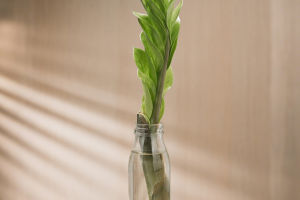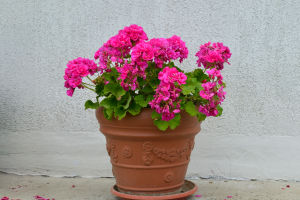Did you know that plants do more than just look beautiful in our homes? They have a remarkable ability to purify the air around us, making our living spaces healthier and more comfortable.
In fact, plants are nature's air purifiers, silently working to improve the quality of the air we breathe.
As we spend more time indoors, especially with the rise of air pollution in urban areas, having plants in our homes is an easy and effective way to boost air quality. In this article, we'll explore how plants purify the air, the science behind it, and how we can use them to create healthier indoor environments.
How Plants Clean the Air
Plants purify the air through a process called "phytoremediation," which involves absorbing pollutants and converting them into harmless substances. Essentially, they act like natural filters, removing harmful toxins from the air and improving its quality. There are several ways plants help clean the air:
• Absorption of Carbon Dioxide: Plants absorb carbon dioxide (CO2) and release oxygen (O2) through photosynthesis, which is essential for maintaining a healthy atmosphere indoors. This exchange helps keep the air balanced and breathable.
• Absorption of Volatile Organic Compounds (VOCs): VOCs are chemicals emitted from everyday items like paints, furniture, and cleaning products. Plants can absorb these harmful compounds, reducing their concentration in the air.
• Humidity Regulation: Plants release water vapor through a process called transpiration, which increases humidity levels. This is particularly beneficial in dry environments, as it can help alleviate respiratory issues and improve skin hydration.
What Types of Plants Are Best for Air Purification?
Not all plants are equal when it comes to purifying the air. Some are particularly efficient at removing toxins and improving indoor air quality. According to NASA's Clean Air Study, which researched the best air-purifying plants, there are several that stand out for their ability to clean the air.
Here are a few of the top plants that can help purify the air in your home:
• Spider Plant (Chlorophytum comosum): This easy-to-care-for plant is known for removing formaldehyde, xylene, and toluene from the air. It's a great choice for beginners!
• Snake Plant (Sansevieria trifasciata): One of the best plants for beginners, the snake plant can survive low light and poor soil conditions. It absorbs toxins like formaldehyde and benzene and releases oxygen, even at night.
• Peace Lily (Spathiphyllum): Not only is the peace lily beautiful, but it also purifies the air by absorbing ammonia, benzene, and formaldehyde. It's also great for increasing humidity in dry rooms.
• Areca Palm (Dypsis lutescens): The areca palm is an excellent air purifier, known for removing toxins like xylene, toluene, and formaldehyde. It's also an effective humidifier.
• Aloe Vera (Aloe barbadensis miller): While aloe vera is known for its soothing properties for skin, it also helps clear formaldehyde and benzene from the air.
These plants are just a few examples of the many that can help purify indoor air. The best part is that most of them are easy to care for, making them ideal for busy people or plant beginners.
The Science Behind Plant Air Purification
You might be wondering: how exactly do plants purify the air? The science behind it is fascinating. Plants have specialized pores called stomata on their leaves, through which they absorb gases from the air. Once absorbed, pollutants like formaldehyde, benzene, and ammonia are broken down and converted into less harmful substances, such as sugars and oxygen, through various biochemical processes.
Additionally, some plants can "store" pollutants in their roots, stems, and leaves, gradually removing them from the air over time. The beneficial microbes in the soil also help break down harmful chemicals, further enhancing the plant's air-purifying abilities.
Interestingly, NASA's Clean Air Study found that just one plant per 100 square feet of space can significantly improve air quality. This means that even a few strategically placed plants can make a big difference in your home.
Other Health Benefits of Indoor Plants
In addition to purifying the air, indoor plants offer a range of other health benefits. Studies have shown that having plants in our homes can:
• Improve Mental Health: Being around plants can reduce stress and anxiety levels. The calming effect of greenery has been shown to improve mood and boost overall mental well-being.
• Increase Productivity: Plants in the workplace or home office can enhance focus and productivity. Research has shown that people tend to work better when surrounded by nature.
• Boost Immune System: The increase in humidity caused by plant transpiration can help alleviate dry skin and respiratory problems. Plus, cleaner air means fewer allergens and irritants, which can lead to a stronger immune system.
• Improve Sleep Quality: Some plants, like the peace lily and lavender, are known for their calming properties, which can help promote better sleep and relaxation.
How to Use Plants to Purify Your Home's Air
If you're looking to improve the air quality in your home, here are some tips on how to incorporate plants into your space:
1. Choose the Right Plants: As mentioned earlier, certain plants are more effective at purifying the air than others. Make sure to choose plants that suit your environment and care level.
2. Position Plants Wisely: Place plants in areas where you spend the most time, such as the living room, bedroom, or office. Don't forget to place some near windows for optimal light!
3. Maintain Your Plants: Regularly water and care for your plants. Trim dead leaves, and repot them when necessary to keep them healthy and thriving.
Conclusion: Nature's Air Purifiers
Plants are much more than simple decorations for our homes—they're natural air purifiers that help improve our health and well-being. By choosing the right plants and positioning them in your living space, you can create a cleaner, healthier, and more vibrant environment.
So, next time you think about decorating your home, remember that plants are a powerful tool in purifying the air and making your space more enjoyable to live in. Have you added any plants to your home recently? Feel free to share your favorite air-purifying plants or ask any questions about plant care in the comments below! Happy planting!


